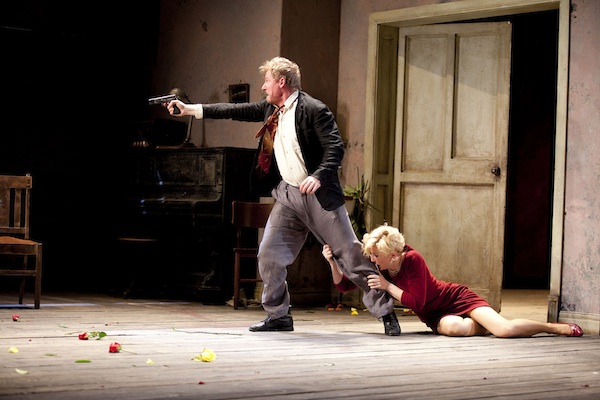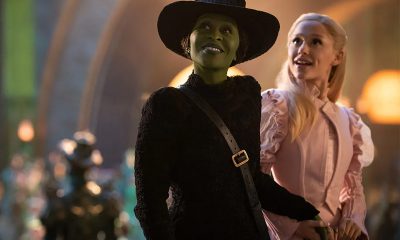Arts & Entertainment
Decadent drama
Blanchett and co. delight in Chekhov adaptation
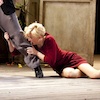
‘Uncle Vanya’
Through Aug. 27
Sydney Theater Company
The Kennedy Center
$59-$135
202-467-4600
kennedy-center.org
Only a few big movies stars shine onstage like they do on screen. Cate Blanchett is one of them. She proved this to local audiences two summers ago with her compelling portrayal of Blanche Dubois in Sydney Theatre Company’s “A Streetcar Named Desire.” Now she’s back at the Kennedy Center confirming her sizable gift as beautiful Yelena in the company’s take on Anton Chekhov’s classic tragicomedy, “Uncle Vanya.”
Staged by Hungarian director Tamás Ascher, it’s an original, bold production that bursts with antic energy, laughter, sadness and self-imposed misery. Blanchett and the rest of the excellent nine-person ensemble cast take chances plumbing the material for all its humor and pathos and the results are terrific.
From her first entrance, Blanchett’s Yelena makes it painfully obvious that country life is not for her. With her white cat-eye framed sunglasses and silk scarf, she is dressed more for paparazzi dodging than walking the grounds of a crumbling estate in the summer heat. Her much older husband, professor Serebryokav (John Bell), looks equally out of place in his citified trench coat and galoshes. Indeed, they’d both prefer to be in town, but straightened circumstances dictate otherwise.
The estate is run by plain and stalwart Sonya (Hayley McElhinney), the professor’s daughter with his late first wife, and her unhappy Uncle Vanya (a marvelously depressed Richard Roxburgh). Vanya was once the professor’s biggest fan working tirelessly on the estate so the professor could concentrate on loftier pursuits, but no more. Vanya has grown disillusioned with his ex-idol. At 47, he feels cheated by life. Making matters worse Vanya is in love with the professor’s beautiful wife.
Totally bored and indifferent to her husband, Yelena alternates from icily poised to warm and almost goofy, but mostly she is restless. And while Vanya’s romantic advances repulse her, she does feel something for the visiting doctor Astrov (played superbly by Hugo Weaving, best known for the film, “The Adventures Priscilla: Queen of the Desert”). Though coarsened by a decade of hard work and vodka, Astrov remains charming and sensitive. Forward thinking like the playwright (Chekhov was also a physician), the doctor is obsessed with preventing the deforestation of the countryside. In fact, he delivers a monologue with a strong environmental message that strongly resonates today more than a century later.
Regardless of Astrov’s recommendation that Russians spare trees and extract fuel from the earth, a workman can be seen frequently chopping wood in the background. And despite (or because of) the doctor’s aversion to felled trees, Zsolt Khell’s set is mostly timber. The interior of the formerly grand but now rundown house is backed by a huge wall of weathered planks and firewood is stacked here and there.
Working from a lively adaptation by Andrew Upton (Blanchett’s husband with whom she runs Australia’s Sydney Theatre Company), Ascher rather brilliantly moves the action from turn-of-the-century Tsarist Russia to mid-1950s Soviet Union. There is no romantic descent into genteel poverty or hope for the future. The atmosphere is more stultifying than ever: as pesky flies drone, radio static hums, the household grows increasingly on edge, ultimately erupting in bursts of violence. And when they’re not fighting, the extended family goes in for demonstrations of remorse, friendship and passion. Also included throughout are some very funny uncomfortable silences, pratfalls and drunken interludes, but nothing feels the least forced when executed by this top-notch group of Aussie actors.
Tall and slim with chicly styled white-blonde hair, Blanchett stands out like a bright light and Györgyi Szakács’ gorgeous costumes only up the wattage. While the others sport baggy earth tones, her Yelena draws attention in a tight red dress and is equally fetching in the crisp gray traveling suit she wears to give the doctor a bracing farewell kiss before beating a hasty exit back to the city.
Movies
‘Hedda’ brings queer visibility to Golden Globes
Tessa Thompson up for Best Actress for new take on Ibsen classic

The 83rd annual Golden Globes awards are set for Sunday (CBS, 8 p.m. EST). One of the many bright spots this awards season is “Hedda,” a unique LGBTQ version of the classic Henrik Ibsen story, “Hedda Gabler,” starring powerhouses Nina Hoss, Tessa Thompson and Imogen Poots. A modern reinterpretation of a timeless story, the film and its cast have already received several nominations this awards season, including a Globes nod for Best Actress for Thompson.
Writer/director Nia DaCosta was fascinated by Ibsen’s play and the enigmatic character of the deeply complex Hedda, who in the original, is stuck in a marriage she doesn’t want, and still is drawn to her former lover, Eilert.
But in DaCosta’s adaptation, there’s a fundamental difference: Eilert is being played by Hoss, and is now named Eileen.
“That name change adds this element of queerness to the story as well,” said DaCosta at a recent Golden Globes press event. “And although some people read the original play as Hedda being queer, which I find interesting, which I didn’t necessarily…it was a side effect in my movie that everyone was queer once I changed Eilert to a woman.”
She added: “But it still, for me, stayed true to the original because I was staying true to all the themes and the feelings and the sort of muckiness that I love so much about the original work.”
Thompson, who is bisexual, enjoyed playing this new version of Hedda, noting that the queer love storyline gave the film “a whole lot of knockoff effects.”
“But I think more than that, I think fundamentally something that it does is give Hedda a real foil. Another woman who’s in the world who’s making very different choices. And I think this is a film that wants to explore that piece more than Ibsen’s.”
DaCosta making it a queer story “made that kind of jump off the page and get under my skin in a way that felt really immediate,” Thompson acknowledged.
“It wants to explore sort of pathways to personhood and gaining sort of agency over one’s life. In the original piece, you have Hedda saying, ‘for once, I want to be in control of a man’s destiny,’” said Thompson.
“And I think in our piece, you see a woman struggling with trying to be in control of her own. And I thought that sort of mind, what is in the original material, but made it just, for me, make sense as a modern woman now.”
It is because of Hedda’s jealousy and envy of Eileen and her new girlfriend (Poots) that we see the character make impulsive moves.
“I think to a modern sensibility, the idea of a woman being quite jealous of another woman and acting out on that is really something that there’s not a lot of patience or grace for that in the world that we live in now,” said Thompson.
“Which I appreciate. But I do think there is something really generative. What I discovered with playing Hedda is, if it’s not left unchecked, there’s something very generative about feelings like envy and jealousy, because they point us in the direction of self. They help us understand the kind of lives that we want to live.”
Hoss actually played Hedda on stage in Berlin for several years previously.
“When I read the script, I was so surprised and mesmerized by what this decision did that there’s an Eileen instead of an Ejlert Lovborg,” said Hoss. “I was so drawn to this woman immediately.”
The deep love that is still there between Hedda and Eileen was immediately evident, as soon as the characters meet onscreen.
“If she is able to have this emotion with Eileen’s eyes, I think she isn’t yet because she doesn’t want to be vulnerable,” said Hoss. “So she doesn’t allow herself to feel that because then she could get hurt. And that’s something Eileen never got through to. So that’s the deep sadness within Eileen that she couldn’t make her feel the love, but at least these two when they meet, you feel like, ‘Oh my God, it’s not yet done with those two.’’’
Onscreen and offscreen, Thompson and Hoss loved working with each other.
“She did such great, strong choices…I looked at her transforming, which was somewhat mesmerizing, and she was really dangerous,” Hoss enthused. “It’s like when she was Hedda, I was a little bit like, but on the other hand, of course, fascinated. And that’s the thing that these humans have that are slightly dangerous. They’re also very fascinating.”
Hoss said that’s what drew Eileen to Hedda.
“I think both women want to change each other, but actually how they are is what attracts them to each other. And they’re very complimentary in that sense. So they would make up a great couple, I would believe. But the way they are right now, they’re just not good for each other. So in a way, that’s what we were talking about. I think we thought, ‘well, the background story must have been something like a chaotic, wonderful, just exploring for the first time, being in love, being out of society, doing something slightly dangerous, hidden, and then not so hidden because they would enter the Bohemian world where it was kind of okay to be queer and to celebrate yourself and to explore it.’”
But up to a certain point, because Eileen started working and was really after, ‘This is what I want to do. I want to publish, I want to become someone in the academic world,’” noted Hoss.
Poots has had her hands full playing Eileen’s love interest as she also starred in the complicated drama, “The Chronology of Water” (based on the memoir by Lydia Yuknavitch and directed by queer actress Kristen Stewart).
“Because the character in ‘Hedda’ is the only person in that triptych of women who’s acting on her impulses, despite the fact she’s incredibly, seemingly fragile, she’s the only one who has the ability to move through cowardice,” Poots acknowledged. “And that’s an interesting thing.”
Arts & Entertainment
2026 Most Eligible LGBTQ Singles nominations
We are looking for the most eligible LGBTQ singles in the Washington, D.C. region.

Are you or a friend looking to find a little love in 2026? We are looking for the most eligible LGBTQ singles in the Washington, D.C. region. Nominate you or your friends until January 23rd using the form below or by clicking HERE.
Our most eligible singles will be announced online in February. View our 2025 singles HERE.
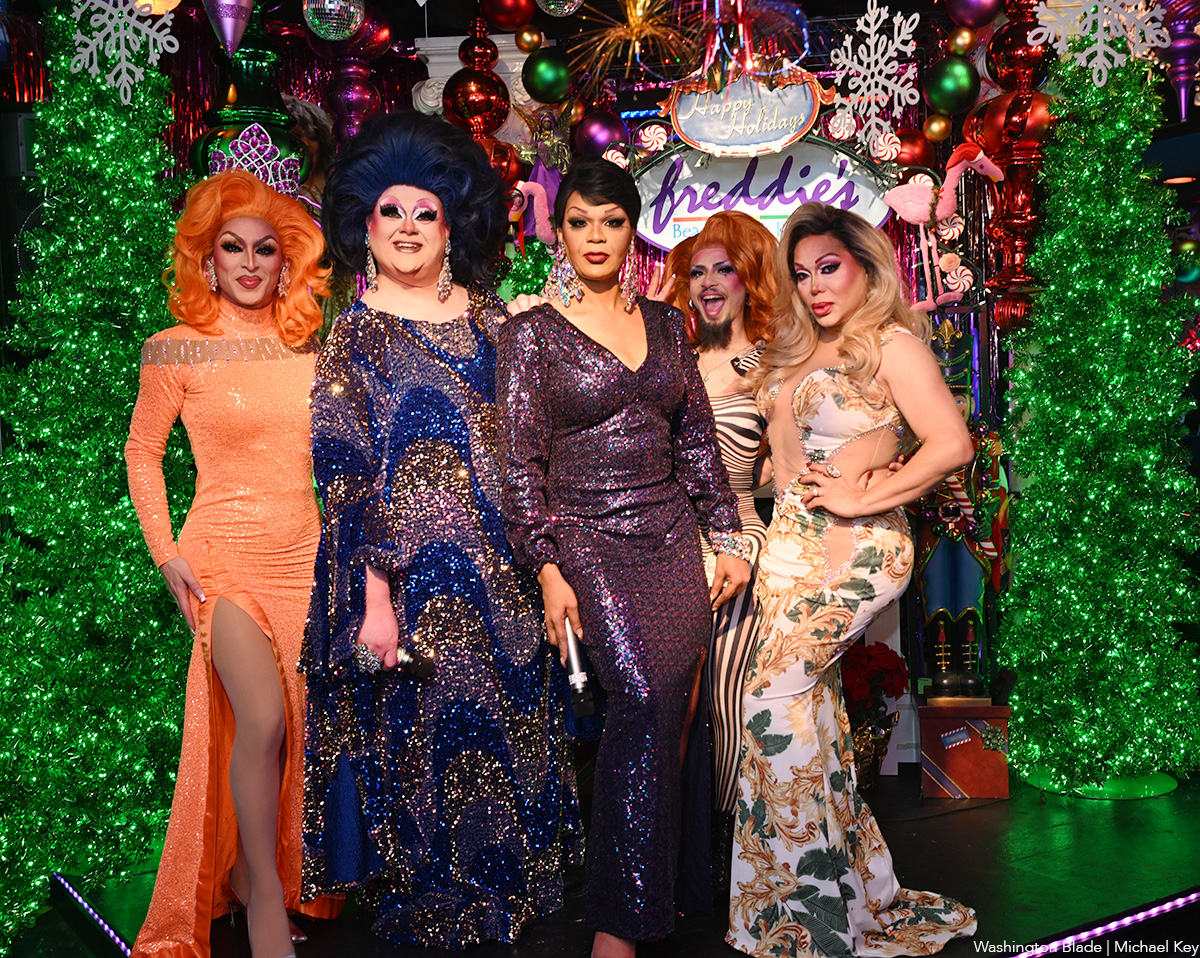
The Freddie’s Follies drag show was held at Freddie’s Beach Bar in Arlington, Va. on Saturday, Jan. 3. Performers included Monet Dupree, Michelle Livigne, Shirley Naytch, Gigi Paris Couture and Shenandoah.
(Washington Blade photos by Michael Key)

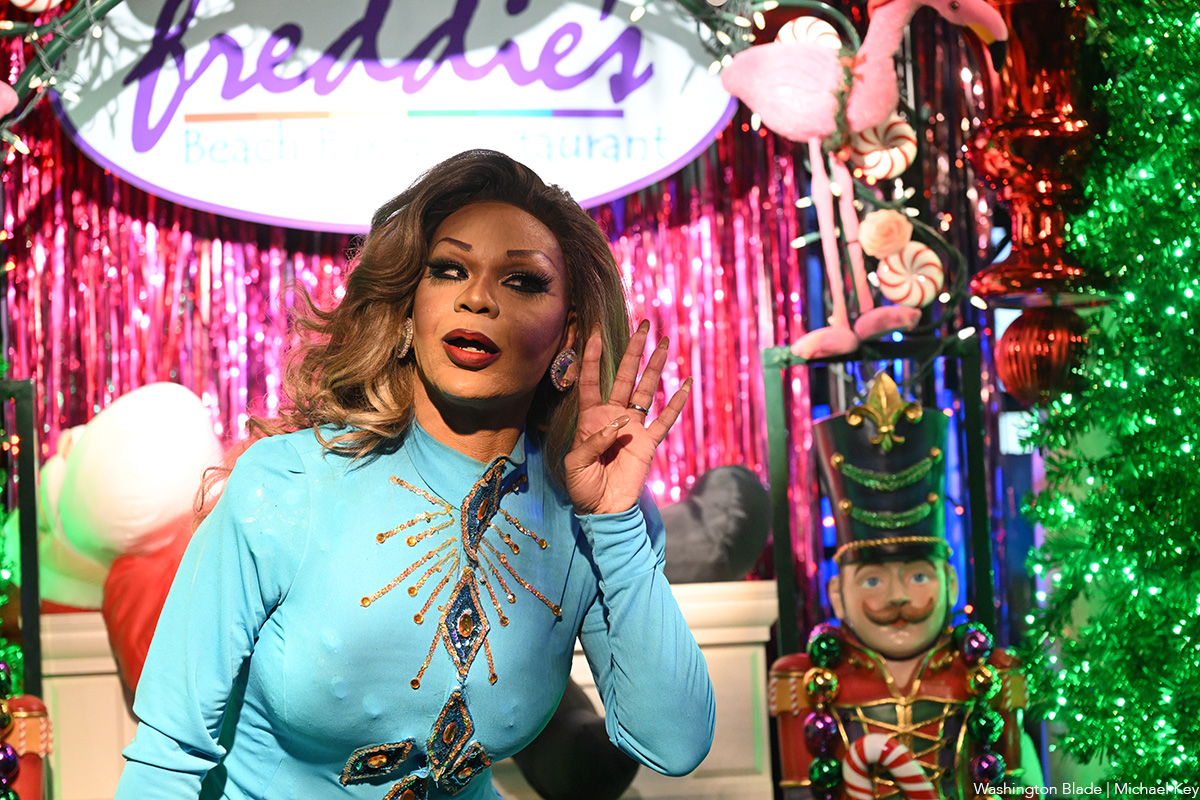





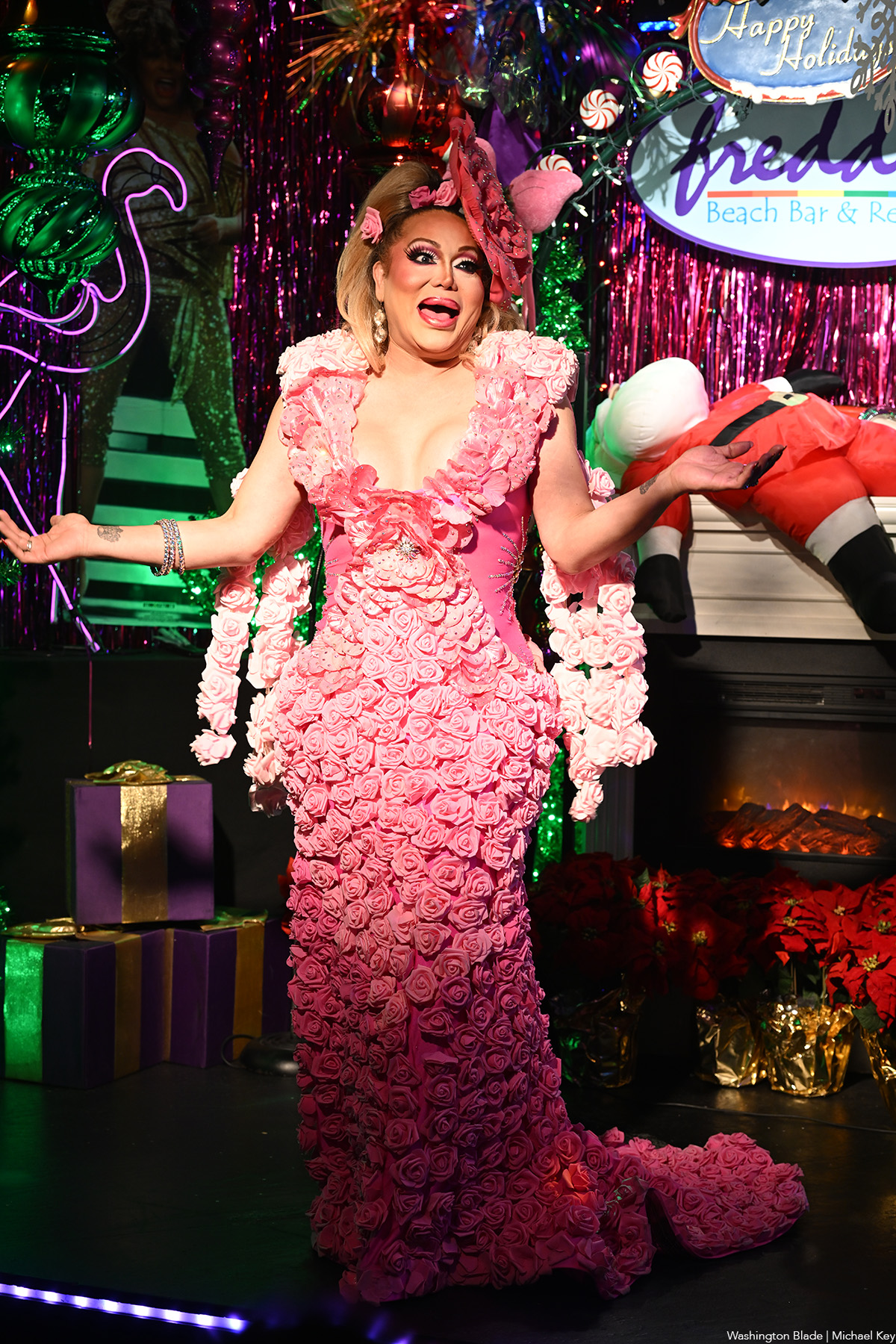


-

 Sponsored4 days ago
Sponsored4 days agoSafer Ways to Pay for Online Performances and Queer Events
-

 District of Columbia3 days ago
District of Columbia3 days agoTwo pioneering gay journalists to speak at Thursday event
-

 Colombia3 days ago
Colombia3 days agoBlade travels to Colombia after U.S. forces seize Maduro in Venezuela
-

 a&e features3 days ago
a&e features3 days agoQueer highlights of the 2026 Critics Choice Awards: Aunt Gladys, that ‘Heated Rivalry’ shoutout and more

